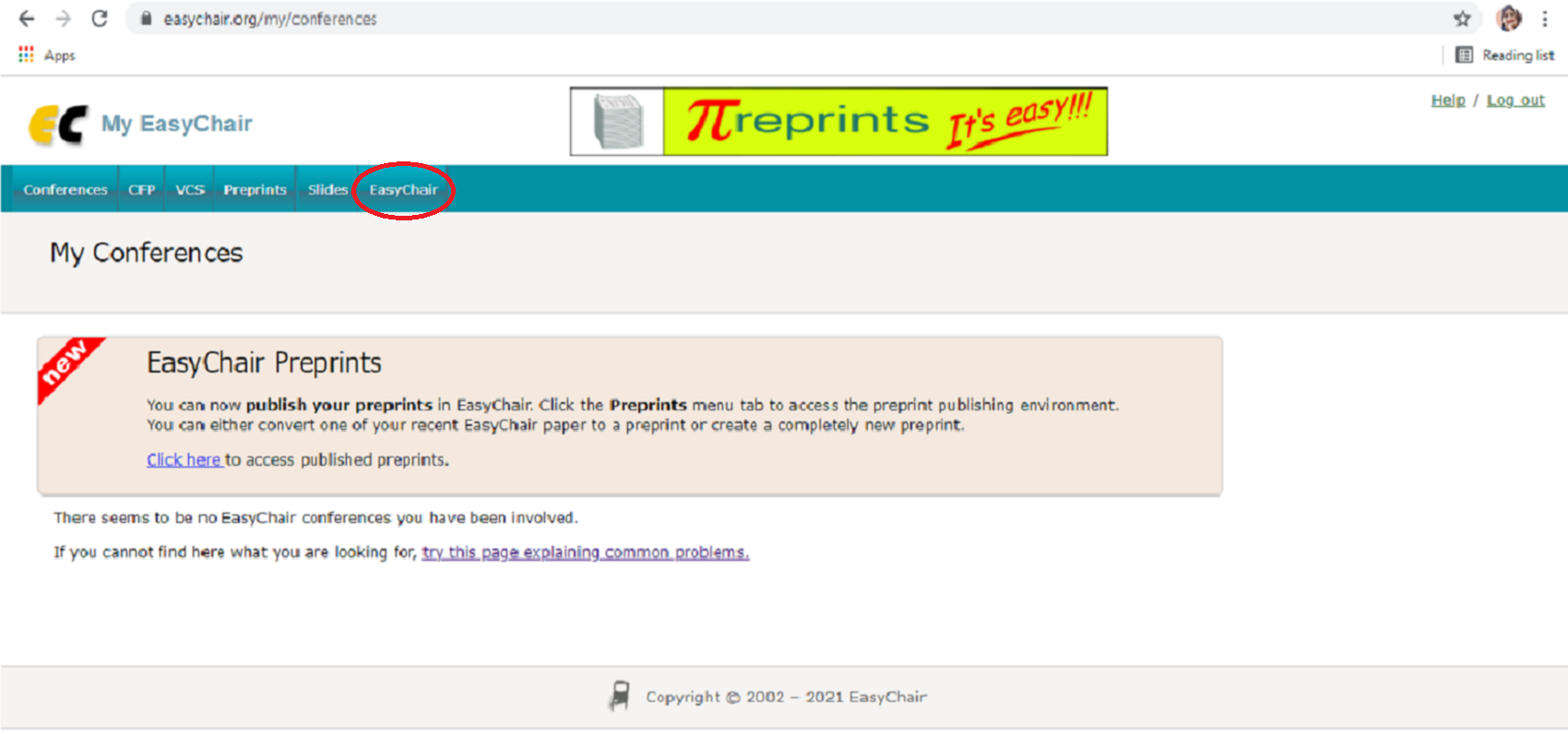Capital Markets Conference 2021
ABOUT THE CONFERENCE
NISM as an institution is engaged in teaching and promoting securities market related programs and research. The Second Annual Capital Markets Conference 2021 is organised with a view to encourage academics and professional researchers to make original research contributions to topics like-The Indian Commodity Markets – changing landscape ; Equity, Cash and Derivatives markets -Interdependence and interconnectedness of the two markets; The Interoperability of clearing corporations and its impact on markets; Innovative financial instruments in the fixed Income Securities Markets; The SME Exchange – regulatory framework – issues and challenges; Impact of technology on security markets – empirical studies; Transmission of information from Social Media to Stock Markets; and Innovations in Mutual Fund Industry. The central theme of the conference is “Investors Interest and Innovative Instruments”. The conference is sponsored by State Bank of India.
Conference Takeaways
- Selected paper for the presentation will be given an award of ₹ 5000
- Certificate of Participation will be provided to participants who attend the conference on both days across all sessions.
- Three best paper awards to be given to the papers chosen by Jury. The awards are in the form of cash prize.*: 1st Prize- ₹30,000, 2nd Prize- ₹25,000, 3rd Prize- ₹ 20,000
*NISM reserves its right not to give awards at all or restrict the number to less than three. Decision of Jury in this matter is final.
Publication Opportunity
Note-
NISM will also come out with a conference compendium where we plan to publish all accepted papers, provided authors consent is given for the same.We would like to make it clear that acceptance of your paper for conference does not automatically convert into a publication in the tied up journal. We will forward the selected papers to the journal. The journal will follow their process of review of all the papers and accept for publication based on their review or editorial recommendations. Kindly note that all journals have their own processes in place for publication.
Key Themes:
The conference themes include the following:
- The Indian Commodity Markets – changing landscape.
- Equity, Cash and Derivatives markets -Interdependence and interconnections of the two markets.
- The Interoperability of clearing corporations and its impact on markets.
- Innovative financial instruments in the fixed Income Securities Markets.
- The SME Exchange – regulatory framework – issues and challenges.
- Impact of technology on security markets – empirical studies.
- Transmission of information from Social Media to Stock Markets.
- Innovations in Mutual Fund Industry.
Key Dates
- Dates for the Conference: 22-23 July, 2021
- Last date for Submission of Final Paper June 15, 2021
- Announcement of Acceptance of Paper for Presentation latest by: July 15, 2021
- Conference Registration Begins: July 10, 2021:
- Last Date for Registration: July 20, 2021
Contact Us
Conference Coordinators:
Dr. Latha Chari
Email: latha.chari@nism.ac.in
Dr. Venkatachalam Shunmugam
Email: venkatachalam.shunmugam@nism.ac.in
Co-coordinators
Dr. Jatin Trivedi
Email: jatin.trivedi@nism.ac.in
Dr. Rajesh Kumar
Email:rajesh.kumar@nism.ac.in
Dr.Narsimhulu Siddula
Email: narsimhulu.siddula@nism.ac.in
Dr.Pradiptarathi Panda
Email: pradiptarathi.panda@nism.ac.in
Mr. Merajuddin Inamdar
Email Id: meraj.inamdar@nism.ac.in
For any other Queries Contact
Mr. Ashutosh Kumar
Email: ssir@nism.ac.in
Mob. No. : 9326022370 / 7506581992
WhatsApp No. : 7506581992
About NISM
The National Institute of Securities Markets (NISM) is a public trust established in 2006 by the Securities and Exchange Board of India (SEBI), the regulator of the securities markets in India. The institute carries out a wide range of capacity building activities at various levels aimed at enhancing the quality standards of and increase the participation in the securities markets.
School for Securities Information and Research (SSIR) aims at promoting policy research, empirical and exploratory studies in the field of financial markets, innovative financial instruments, new regulation and introduction of new products and the challenges in the existing regulations related to financial markets.
-

Mr. Ajay Tyagi
Chairman, SEBI
-

Mr. Santosh Kumar Mohanty
Director, NISM and Whole Time Member, SEBI
-

Mr. Sunil Jayawant Kadam
Registrar, NISM
-

Dr. V. R. Narasimhan
Dean & Professor of Practice (School for Securities Education (SSE), School for Regulatory Studies and Supervision (SRSS) & School for Corporate Governance (SCG))
-

Bart Frijns
Professor of Finance, Open Universiteit, Netherlands
-

Dr. Sudhir Rana
Gulf Medical University, UAE
-

Dr. Sankarshan Basu
Professor, IIMB
-

Dr. Joshy Jacob
Associate Professor, IIMA
-

Prof. Parag Kalkar,
Dean, Faculty of Commerce and Management, Savitribai Phule Pune University
-

Dr. Tirthankar Patnaik
Chief Economist, NSE
-

Dr. V. Shunmugam
Consultant-Commodities Education Cell (CEC)
-

Mr. Abhijit Vaidya
Executive Director and Co-Head, Equity Corporate Finance team
-

Mr. Laxman Neupane
Economist
-

Dr. Rachana Baid
Professor, HOD (School for Securities Education), NISM
-

Dr. Nitin Tike
General Manager - Certification, Test and CPE Administration, Controller of Examinations Unit
-

Prof. Abhay Pethe
Chairman, Academic Council, NISM
Academicians, researchers, students and other stakeholders are invited to submit Research Papers related to the specified themes only.
The submitted work should not have been published elsewhere and should not be intended to be published elsewhere during the review period. Final papers are to be submitted on or before the specified dates.
Call for Papers Themes**
The call for papers themes includes the following:
- The Indian Commodity Markets – changing landscape.
- Equity, Cash and Derivatives markets -Interdependence and interconnectedness of the two markets
- The Interoperability of clearing corporations and its impact on markets
- Innovative financial instruments in the fixed Income Securities Markets
- The SME Exchange – regulatory framework – issues and challenges
- Impact of technology on security markets – empirical studies
- Transmission of information from Social Media to Stock Markets
- Innovations in Mutual Fund Industry
** Detailed explanation of the themes is provided under the themes tab.
Papers Submission Guidelines
The guidelines for the paper submission are:
01. Only one paper by one author/co-author will be acceptable.
02. Research papers with empirical analysis/evidences will only be accepted.
03. Papers shall not be longer than 10,000 words excluding bibliography references.
04. Paper layout should be One-column Portrait.
05. Analysis done as part of the research work and quoted in the papers shall be based on authentic data sources only and be referenced.
06. No information about the the author/s or their affiliation shall be included in the paper to be submitted in the pdf/word
07. Please submit the papers along with 5 key words to help us classify and with Journal of Economic Literature (JEL) codes.
08. Research work described in the paper should not have been published anywhere, and be original/empirical. Submitted papers will also go through plagiarism check.
09. The font should be in Times New Roman with 12 font size and single-spaced.
10. Papers exceeding plagiarism levels of 25% will be rejected in the screening process.
11. All papers will be blind reviewed to ensure an adequate standard, proposed subject of the submitted abstract has been followed, length of paper.
12. The author’s details including name, title, current position along with the name of the organisation, and contact details needs to be mentioned only in the Easy chair form and should strictly not be included in any form in the paper submitted.
13. No changes will be allowed in the paper title, paper and authorship after submission.
14. We encourage use of footnotes than endnotes.
15. Authors will be fully responsible for the accuracy of the data used.
16. Bibliographical references needs to be in the American Psychological Association (APA) style.
17. All tables need to be numbered in Arabic numerals and should always be cited in the text with consecutive numbers. Each table should contain a ‘’Title of the Table’’. Footnotes of the table should be in subscript lowercase letters and needs to be placed below the table body. The table font should be 10, times new roman and it should be properly aligned.
18. All figures need to be numbered and titled in chronological order. The figures should be clearly readable and interpretable.
19. Any violation of the above instructions will lead to the rejection of the paper.
Bibliographic References
References should include (a) Author’s surname, initials as it appears on the cited works, (b) Year of publication, (c) “Title of the paper”, (d) Name of the Journal, (e) Volume number, (f) (Issue number), and (g) Page references.
01. References must appear at the end of the manuscript and not as footnotes on each page.
02. Each source cited in the paper must appear in the reference list; likewise, each entry in the reference list must be cited in the text portion of the paper.
03. Reference list entries should be alphabetized by the last name of the first author of each work.
04. Authors’ names need to be inverted (last name first); give the last name and initials for all authors of a particular work for up to and including seven authors.
05. All major words in journal titles needs to be capitalize. When referring to books, chapters, articles, or webpages, capitalize only the first letter of the first word of a title and subtitle.
06. An example of bibliographic reference is given below:
Sims, C. A., Stock, J. H., and Watson, M. (1990), Inference in Linear Time Series Models with Some Unit Roots, Econometrica58, 113–144
Selection of Papers
01. Papers submitted on or before the timeline will only be considered.
02. Decision of the Selection Committee on acceptance/rejection of the paper will be final.
03. A lump sum amount of ¬ ₹ 5,000 will be awarded per selected paper to the author (to the first author only, if the paper is co-authored).
04. The conference will offer the Best Paper Award to three best papers (first, second and third) and will be awarded ₹¬ 30,000, ¬ ₹ 25,000 and ¬ ₹ 20,000 respectively, which will be announced at valedictory session.
Publication Opportunity
Note-
NISM will also come out with a conference compendium where we plan to publish all accepted papers, provided authors consent is given for the same.We would like to make it clear that acceptance of your paper for conference does not automatically convert into a publication in the tied up journal. We will forward the selected papers to the journal. The journal will follow their process of review of all the papers and accept for publication based on their review or editorial recommendations. Kindly note that all journals have their own processes in place for publication.
Key Dates
Dates for Conference: 22-23 July, 2021
Last date for Submission of Final Paper: 15 June, 2021
Announcement of Acceptance of Paper for Presentation latest by: 15 July, 2021
Conference Registration Begins: 10 July, 2021
Last Date for Registration: 20 July, 2021
Registration Fees
There is No Registration fees.
How to Register?
All interested participants including paper presenters will register through registration link. For Registration click here
Steps to Register for the conference
For registration contact:
Ms.Smrithi Joseph- 9136761961
Mr.Ashutosh Kumar-9326022370/7506581992.
Email id: ssir@nism.ac.in
The Theme of the Conference are as follows:
1. The Indian Commodity Markets – changing landscape.
Regulation of commodities markets came under SEBI since 2016 and have since then gone through various changes in terms of products, regulatory principles/processes, market policy, investor participation, etc. Significantly, all commodities which can be delivered without any implications for storage space and the regulatory requirements have been made deliverable leading to development of storages even for the metals sector. SEBI had also allowed the options on commodity futures and commodity underlying, to connect the farmers with the markets as the mode of risk management. The risk management framework in the commodities markets has been strengthened along with the alternative risk management framework by SEBI to protect the commodities markets from impacts such as negative prices that were seen in commodities. It is time that studies may examine the impact of these developmental and regulatory initiatives on the markets in terms of its various performance parameters such as market efficiency such as liquidity, price discovery, hedging, etc.
2. Equity, Cash and Derivatives markets -Interdependence and interconnectedness of the two markets
Issues on the functioning of the equity derivative markets have been highlighted by various researchers demanding for the compulsory delivery in response to price convergence issues between these two markets. In response to the same, since April 11, 2018, SEBI had mandated the physical delivery of equity derivatives. Further, starting with December 2020, a new margining system was introduced to enhance transparency, preventing brokerages from misusing clients’ securities and to enhance risk management among market infrastructure institutions. The price discovery mechanism between cash and derivatives markets has been strengthened. To maintain liquidity and reduce volatility especially during the crisis period or pandemic period, the capital market regulator is taking several measures. Time that researchers examine the impact of various measures to make it more relevant the existence of the derivative markets and its impact on cash markets in terms of convergence of cash and derivative markets, post and pre-mandatory delivery requirements, margining measures and its pact on price discovery in the derivative markets, etc.
3. The Interoperability of clearing corporations and its impact on markets
In November 2018, the Securities and Exchange Board of India (SEBI) put forth a framework for interoperability among clearing corporations to ensure seamless clearing post the trading process at a clearing house of choice for the individual and institutional investors. This move assumes enormous significance in light of cost and operational efficiencies it can bring into the functioning of the stock exchanges and the respective Clearing Corporations. An independent study by the researchers on its impact on the markets, functioning and participants would be timely to provide any policy fine-tuning which may further strengthen the risk management functions of the clearing corporations and seamless operations of clearing corporations at the back of the active cash markets for equities.
4. Innovative financial instruments in the fixed Income Securities Markets
As problems in the real economy imposes constraints on fundraising, participants look for innovative ways to address the constraints and to raise funds. For example, ‘Green Bond attracts a specific group of investors and helps issuers as well as the green aspirations of the policy makers in general in their focus on tackling climate change. This innovative financial instrument was issued in the year 2008 by World Bank at the request of investors. After a careful examination of its issuance and implications, with the growing market demand and awareness, SEBI allowed companies to issue green bonds from 2017 onwards. The municipality bond was allowed for issuance and trading by SEBI from 2015 taking a cue from the developed markets to develop alternative sources of funding for public and local body institutions. Similarly, the markets have introduced various formats of interest rate derivatives in 2003, 2009 and 2014. While two times (in 2003 and 2009) this product could not attract the participants, it was at its third iteration during 2014 that rate futures trading has started slowly gaining momentum in the Indian derivatives market. While researchers can focus on suitability of these new instruments meeting participant expectations for the development of markets for innovative financial instruments.
5. The SME Exchange – regulatory framework – issues and challenges
Indian markets witnessed development of trading platform for small and medium enterprises (SME) since they were allowed during 2012 to provide market based fund raising process. Despite the aspirations of the policy makers and market infrastructure institutions, its utility remains limited to a handful of SMEs/Start-ups which can take advantage of the existing platform. Given various innovative ways in which SMEs and Start-ups are today raising public funds in various developed markets, it is essential for the researchers to study the suitability of adaption of these measures to improve SME participation in publicly traded markets. Examples of successful SME exchange ventures in London and Tokyo can throw some light on innovative processes and risk management methods that shall increase more listings and more liquidity in this market. Although the concept of market maker is applicable in case of SME exchange in India, it was of no avail in enhancing the access of SMEs to this new way to raise funds.
6. Impact of technology on security markets – empirical studies
Technology drives the market both in terms of access and information with a potential to make markets more inclusive. There are a lot of developments in the application of technology in securities markets like Fin-Tech, ALGO trading, Direct market access and so on. On the other hand, in the recent times very well-designed mobile apps and easy to access websites have also been helping the investors and market participants without much hurdles. It’s time to analyse the role of technology on markets, market efficiency, market participation and inclusiveness.
7. Transmission of information from Social Media to Stock Markets
With increased inter-connectivity of individuals through social networking applications and websites, social media had started playing enhanced role not only in investor education but also as a means to drive investor sentiments. Now a day’s demonstration effect is more visible in the securities markets because of more use of social media platform to get information about the market. Social media apps such as Twitter, Face Book or LinkedIn are abundant with various stock trading recommendations that are not normally in the interests of either the intermediary or that causes huge loss of the new entrants in the market making them at times averse to markets. There are also honest research-based recommendations that are published in the social media which get scant attention. Nowadays, tools such as text analysis or the sentiment analysis are also gaining tractions in terms of their use to enhance informed decision making by algorithmic traders in electronic markets. It is in this context the role of social media on markets and ways in which its positive impact can be multiplied while preventing the negative fallout shall be examined by independent researchers to provide policy feedback to the market regulators.
8. Innovations in Mutual Fund Industry
Mutual funds play a crucial role in channelizing savings of household into capital markets. This industry also attempts provide the benefit of diversification to small/retail investors, along with High-net-worth investors (HNIs) and other institutional investors as more and more asset classes are allowed for their investment apart from their diversity of themes. The AUM of the mutual fund industry has crossed ₹ 31.64 trillion (As on Febriuary, 2021/AMFI). Two years ago, SEBI had also permitted mutual funds to start the commodity derivatives schemes. The total expense ratio, the fund managers performance, the contribution of debt and equity schemes to the total AUM of the fund house, the performance of the scheme along risk factors matters a lot to the investors. Investor preferences and response to transparency various other policy and industry initiatives is yet to be widely studied for its implications to the business of the industry and policy making.
Frequently Asked Questions
Q1. EasyChair link is not redirecting to the submission of full paper for the conference, what to do?
Ans:

If you are getting the above details after log in, please follow the following steps:
- Hover your mouse pointer over EasyChair tab, you will get “Smart CFP” option.
- Click Smart CFP, you will get search option in the middle of the thick yellow line.
- Search “CMC2021” there, you will get second result from above as Second Capital Markets Conference 2021.
- Click the acronym CMC2021, you will get the submission link second from the above.
- Click the submission link, you will get the Author- make a new submission.
- Click “make a new submission” and submit the full paper.
Q2. How to submit the full paper?
Ans: Steps to Submit the Full Paper:
- Click the Call for Papers Tab.
- Click the EasyChair Link in the last of the third sentence from above highlighted in red.
- Create your login account with your email id.
- Close the browser and click the link through the conference website again.
- Fill in the details and submit the paper.
Q3. Can I submit abstracts before full paper?
Ans: No, you have to submit the full paper only by June 15, 2021. (12:00 midnight)
Q4. Can I submit paper from other ways?
Ans: No, you cannot submit your full paper through mail or drive links etc. You have to submit through EasyChair only.
Q5. Will I get the publication opportunity?
Ans: Yes, you will get the Publication Opportunity in the following two journals:
Note-
NISM will also come out with a conference compendium where we plan to publish all accepted papers, provided authors consent is given for the same. We would like to make it clear that acceptance of your paper for conference does not automatically convert into a publication in the tied up journal. We will forward the selected papers to the journal. The journal will follow their process of review of all the papers and accept for publication based on their review or editorial recommendations. Kindly note that all journals have their own processes in place for publication.
Q6. How to register?
Ans: All interested participants including paper presenters will register through registration link. Registration Link for Participants will be provided on the date of opening of registration (July 10, 2021) under registration tab.
Q7. Is there any fee for registration?
Ans: No, there is no fee for registration.
Q8. Is there any fee for publication of papers?
Ans: No, there is no fee for publication of papers.
Q9. When will I receive the communication of Acceptance/Rejection of Paper for Presentation?
Ans: Latest by July 15, 2021.
Q10. How will I receive the communication of Acceptance/Rejection of Paper for Presentation?
Ans: You will receive the communication of Acceptance/Rejection of Paper for Presentation via mail. You will get the mail from conference@nism.ac.in to your registered email id.
Q11. Can I get the extension for the submission of Full Paper?
Ans: There is no any extension for submission of Full Paper. You need to submit the full paper only by June 15, 2021. (12:00 midnight).
Q12. Whom should I contact for further queries?
Ans: Ashutosh Kumar, M: 9326022370, WhatsApp: 7506581992


